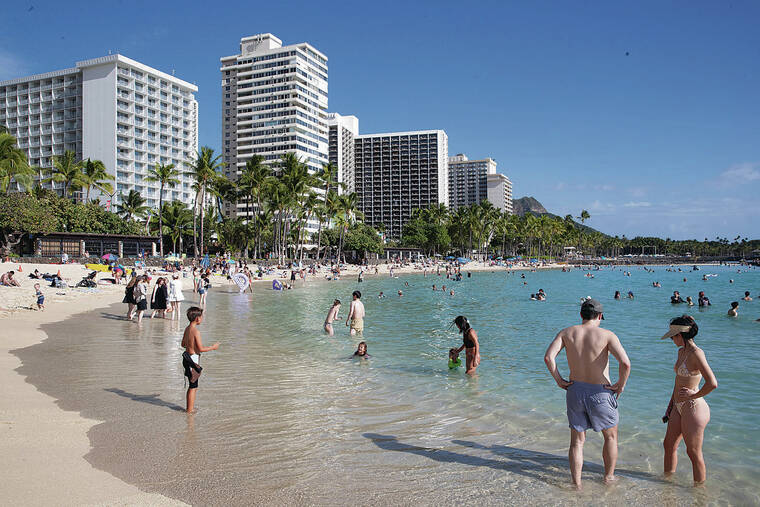By None
Copyright staradvertiser

Fundamental change is underway for the state-funded Hawaii Tourism Authority (HTA) and its legacy contractor, the Hawaii Visitors and Convention Bureau (HVCB). The shifting priorities and expectations involved came to light at this week’s Hawaii Tourism Conference, with its emphasis on regenerative tourism and destination stewardship.
The long-intertwined HTA and HVCB have much to prove and a big job in front of them — but there is positive momentum in play. HTA has moved within the state bureaucracy, administered by the Department of Business, Economic Development and Tourism (DBEDT). This puts Gov. Josh Green and DBEDT Director James Kunane Tokioka in the chain of command, and Green is a vocal advocate for the state’s kuleana to practice stewardship. And HVCB is also morphing, with the ascent of cultural consultant and former HTA board chair Aaron J. Sala to HVCB’s top position last year.
Each organization will have to prove its competence by showing measurable, “regenerative” results, as there is no Hawaii-honed precedent to follow. Fingers crossed: Both organizations will also be seeking to transform their own cultures at the same time.
Regenerative tourism and destination stewardship are models for operation that “regenerate” and “steward” Hawaii’s natural and cultural resources, which have often been depleted and undervalued. Green connects this responsibility to tourism via his championing of a “green fee” — an add-on hotel-room tax surcharge to fund environmental protection and mitigation efforts.
At this week’s conference, members of the state’s new Green Fee Advisory Council told attendees they want the green fee to simultaneously strengthen Hawaii’s environment and enhance visitors’ experience. Tourism industry representatives offered support for the fee, because a significant chunk of the estimated $100 million annually is expected to go to beach replenishment or other county-guided, tourism-benefiting environmental impacts.
Of course, a thriving tourism sector is also key to successfully implementing stewardship goals, and the drive to thrive appeared with a focus on diversifying Hawaii’s tourism streams — particularly with sports-related events and attention- and tourist-grabbing island film projects. Green and Tokioka put their authority with HTA in play to add two new advisory committees: sports and film. Each has been allocated $500,000 in HTA’s budget.
Tokioka told the Star-Advertiser: “The visitor industry is the engine of the state, so we cannot be stagnant. … We aren’t going to rest on our laurels. We’ll keep pushing forward to figure out the best plan to attract more people to Hawaii.”
The commitment to innovation and new approaches is welcome. Note, though, that Tokioka’s statement also echoes the state’s longstanding emphasis on visitor numbers and tourism revenue.
Whatever develops, it won’t be business as usual. As Tokioka also noted, HVCB is adjusting priorities to seek “different areas to make impacts than we’ve made in the past,” and attract “responsible travelers” with specialized interests who will increase their spending accordingly. At Sala’s direction, HVCB has rebranded — as a “private, nonprofit, regenerative destination leadership enterprise” and future-oriented “Destination Management Organization.”
Efforts to shift course from the “more is better: promise them beauty but pack ’em in” approach that has distinguished Hawaii’s marketing efforts for more than a century have been underway for at least a decade, but turning tourism onto a new track has been tough. Hawaii residents who populate this “destination” must stay alert, and insist the state, tourism sector and Legislature work together to deliver on the promise of these new efforts.



